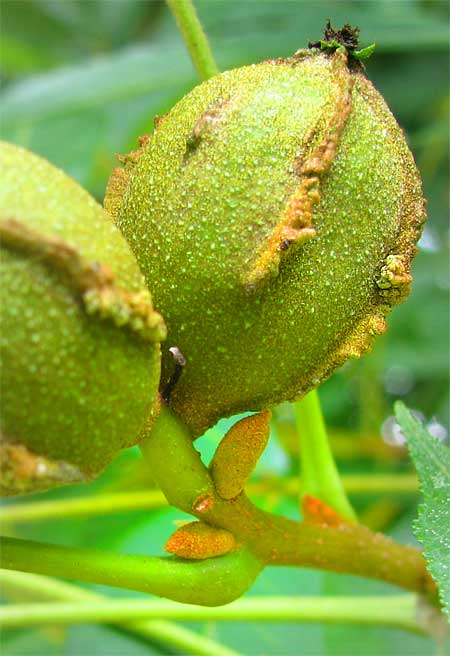Excerpts from Jim Conrad's
Naturalist Newsletter

from the the July 7, 2008 Newsletter, issued from the forest near Natchez, Mississippi; elevation ~400ft (120m), ~N31.47°, ~W91.29°:
BEAUTIFUL BITTERNUTS
In an overgrown, property-boundary-forming hedgerow near my camp a Bitternut Hickory, Carya cordiformis, one of the pignut hickories, is bearing immature but already pretty nuts, as shown above.
You can see a close-up of the nuts, as well as the unusual and distinctive, scurfy-yellow buds, below:

What a pleasure seeing such a noble tree as a hickory healthily producing fruits exactly as it should, and adhering to the fine points of its identify so closely that its nuts are perfect examples of what they are meant to be. See how the four nut-husk "ribs" -- where the husk eventually will split open -- extend only halfway to the fruit's base, exactly as it should! In a world where everything seems to be an exception or a record, a perversity or something never before witnessed, having before me just plain old Bitternut nuts imbues me with a sense of well being.
I said it was a kind of pignut. "Pignut" isn't a technical term. It's a name applied to any of several hickory species whose nuts are small, invested with thin husks, and the shells aren't too hard; the nuts are eligible for being easily devoured by pigs.
In even halfway intact woods, Bitternuts are common, and the species is distributed through most of eastern North America's forest biome. However, around here where clearcutting encourages even-aged pine plantations where mixed forests used to stand, slow- growing, wildlife-nourishing trees like the hickories are much rarer than they used to be.